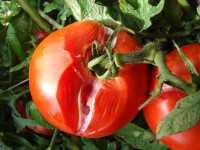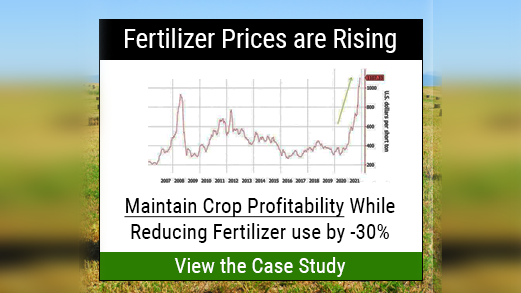Snuff Out Sour Rot Of Tomato

Disease Specs
Sour rot is caused by Geotrichum candidum, a common soilborne fungus that causes the disease not only in tomatoes, but also in citrus fruits and vegetables. Also, it can be a contaminant on tomato-handling equipment.
Identification
The sour-rot pathogen is a type of yeast. Fruit lesions may initially be watery, but later become coated with fungal growth. This growth on infected fruit resembles a thick, gelatinous mass similar in appearance to cottage cheese and remains relatively firm unless a secondary infection by a soft rot bacterium occurs.
The odor of these lesions is distinctive and is similar to that produced by lactic acid bacteria, hence the disease name, sour rot.
Survival And Spread
G. candidum, like other fruit-rotting organisms, is an opportunistic pathogen that can live on plant debris in the soil. Because it is a saprophyte, it is ubiquitous in the natural environment and can be found in almost all soils.
The sour rot organism may be windborne or splashborne on soil particles to surfaces of fruit in the plant canopy.
Tomatoes are most resistant when they are relatively dry and firm. Mature green tomatoes are more resistant than are ripe fruit.
Mechanical injuries that occur during harvest and handling are a frequent site for decay development beginning on the fruit surface. Chilling injury and water congestion can compromise a tomato fruit’s natural resistance to decay and allow sour rot to develop and produce a watery decay.
Periods of persistent rainfall, fogs following rainfall, cool mornings, or exposure to chilling temperatures in the field can increase the incidence of sour rot.
Harvest and transport of wet fruit also can result in an increased incidence of disease. The potential for development of sour rot and other decays after harvest will be lowest if the plants are dry and free of decay at the time of harvest. When harvested and placed in bins, infections can spread to adjacent and nearby fruit, leading to a nest of infection.
Management Methods
Control of sour rot involves both field and packinghouse sanitation. The implementation of good agricultural practices in the field and at harvest greatly aids in the prevention of sour rot and other postharvest fruit rots.
Sanitation must be effective at each step from harvest through handling. In the packinghouse, recommendations include:
• Maintain free chlorine concentration in dump tank at 150 to 200 parts per million and pH of 6.5 to 7.5.
• Keep water at least 10°F above tomato pulp temperature and keep immersion time less than two minutes to minimize water infiltration into the tomato.
• Elimination of “dead spots” in the dump tank or flume where tomatoes can remain trapped for excessive periods of time.
• Do not allow tomatoes to accumulate to more than a single layer in the dump tank, to minimize water pressure on the fruit.
• Drain dump tanks daily, remove sediments, sanitize, rinse, and refill with potable water.
Application of a labeled fungicide on the last legal day before harvest may help reduce the incidence of sour rot and other postharvest decays.










